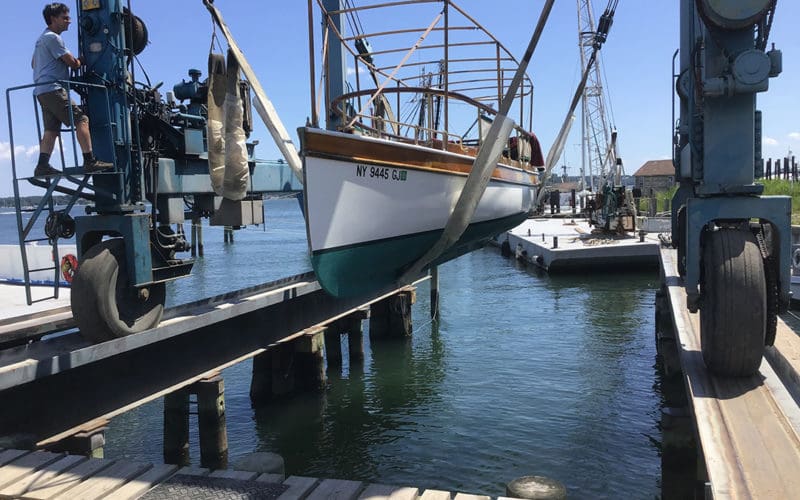 Back in 1999, when I had the hare-brained idea that I wanted to operate a tour boat in Greenport, NY at the northeastern tip of Long Island, I already had enough experience working as crew on other boats to know better, but I didn’t heed that knowledge!
Back in 1999, when I had the hare-brained idea that I wanted to operate a tour boat in Greenport, NY at the northeastern tip of Long Island, I already had enough experience working as crew on other boats to know better, but I didn’t heed that knowledge!
I also knew that the Coast Guard allows a tour boat to only carry six passengers if it is uninspected and carrying six passengers, unless I charged outrageous amounts, wasn’t going to pay its way. Though I already held a 200-ton master’s license and had been involved in the charter world both inshore and offshore, that there were still empty spaces in my knowledge and to safely carry passengers I would have to appeal, as they used to say in the old hot dog commercials, to a higher authority, in this case the Coast Guard. I would need what’s known as an inspected boat
I was fortunate finding a 1990-built, electric powered, 30-foot Elco launch named Glory that when built had a Coast Guard stability test and was constructed of fire-retardant resin and came equipped with a fixed firefighting system. The Coast Guard had not yet given a certificate of inspection (COI), but I was assured by the owner that the boat would pass inspection.
In due course Glory indeed met all the requirements and I was issued a COI for lakes, bays, and sounds. The boat was certified to carry 14 souls and the Coast Guard did not require that I have crew. I was in business.
Fast forward 23 years. In the time from then until now I’ve had my license renewed three or four times and every year Glory has been scrutinized by any number of young men and women in the Coast Guard who have gone over everything on the boat from backup steering to firefighting equipment to man overboard drills, etc.
I’ve always passed inspection, though at times I have been involved in debate when opinions between myself and the inspectors diverged. Fortunately, those times are few and are relatively simple to resolve by consulting the Code of Federal Regulations, Part 46. This 563-page book is the Bible, the constitution of rules and regulations for all shipping. Last revised in 2003, this tome is the last word on shipping rules. The section concerning subchapter T small passenger vessels (less than 100 gross tons) is where, if a disagreement occurs, the inspector and I spend our time. Everything is written out in the regulations, so once the section is found debate is limited. Sometimes the rules still have to have to be interpreted. For the most part, the inspectors favor a very strict analysis. If it is in the book, it’s in the book.
Out here on the North Fork, Glory is the only tour boat inspected by the Coast Guard. To the passengers it means little. To me it means everything — the difference between thinking that I have done it right and knowing that I have. Short of an act of God, which is always possible, it comforts me to know I have followed every rule and regulation to protect my guests on the unforgiving environment where tour boats operate. It is true that the anticipation of my annual inspection is still fraught with anxiety. It is also true that there’s no way I would ever commercially operate a boat without that certificate. n
Contributing editor David Berson writes the Nav Problem column and is a co-owner of the electric launch Glory in Greenport, NY.

